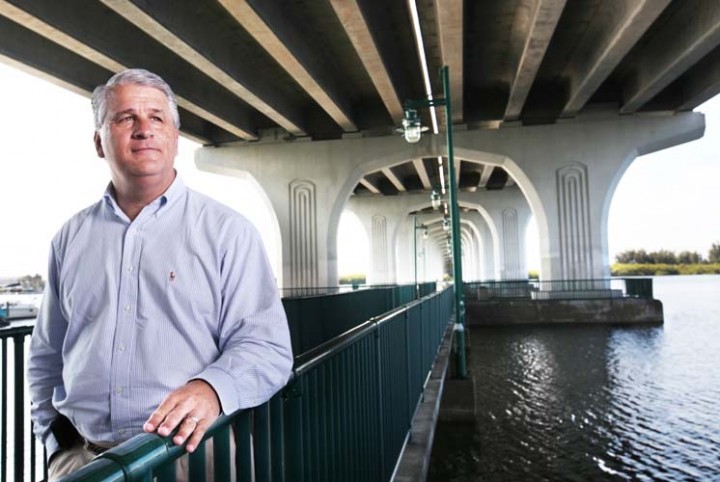
VERO BEACH — The Yale Club of the Treasure Coast voted to adopt the deteriorating health of the Indian River Lagoon as its community focus project in 2013, bringing 150 Ivy Leaguers to the front lines of the fight to preserve what has been up until now the most bio-diverse estuary in the United States.
They join the Vero Beach Rotary Club, which recently made protecting seagrass near the Moorings a top priority, County Commissioner Tim Zorc, who is organizing a symposium on lagoon problems, and at least a dozen conservation organizations and state and federal agencies that are increasingly focused on the lagoon and its daunting array of difficulties.
This year was a bad year for the Indian River Lagoon, with a murky brown algae bloom choking the northern reaches while some as yet unknown X-factor killed off all the seagrass in Indian River County north of the 17th Street Causeway.
But some good has come out of the disasters. As more and more individuals, groups and organizations wake up to just how dire the situation is and commit to work for solutions, it seems that protecting and restoring the health of the lagoon is becoming a central element of civic virtue.
“This started for us as a concern about the county refusing to pass a fertilizer ordinance,” says Yale Club board member Doug Graybill. “Then we heard about the massive loss of seagrass over the summer and became even more concerned.
“The lagoon is a huge revenue producer for Indian River County in fishing and eco-tourism and we want to get people energized to solve the problems out there and protect it.”
As a first step, the group will host a lecture by Peter Crane, dean of the Yale School of Forestry and Environmental Studies.
He will talk about the interconnectedness of natural and human systems, the dynamic that is destroying lagoon ecology, at the Waxlax Auditorium in early February.
“We plan to invite the Environmental Learning Center, the Land Trust, the Audubon Society and other groups to set up displays in the lobby to inform people about what they are doing to help the lagoon and give people an opportunity to get involved in those efforts,” says Graybill, who is on the Environmental Learning Center’s board.
Beginning the day after Crane’s lecture, Harbor Branch Oceanographic Institute will hold a three-day event that includes a symposium and forum in which scientists working on lagoon issues will report their latest findings.
Shortly after that, in early March, the county will host a gathering of public officials, scientists, environmentalists and concerned citizens to try and develop concrete solutions to the lagoon’s problems, taking into account the latest science.
At about the same time, an emergency response group of scientists put together in June by St. John’s River Water Management District to investigate the 2011 super bloom of algae in the northern lagoon should be finishing up its work and reporting results.
“The first step was accumulating a lot of data,” says Chuck Jacobi, project scientist for IRL estuary program at the water management district. “The second step was looking for patterns in the data to see if there is anything unusual. The third step, which we are about to begin, will be going through the scientific literature to see if any of these patterns have occurred before and can help explain what happened.
“We are pushing as hard as we can to get done and hope to have some results in early 2013. We hope that what will come out of our efforts is some understanding of causes and a plan of attack for the future.”
The 2011 super bloom was the first in the series of recent eco-disasters in the lagoon. An unprecedented growth of a certain type of algae, larger in extent and longer-lasting then any seen before, it killed more than 40 percent to the estuary’s seagrass.
It was followed by the brown algae bloom this year and the mysterious loss of Indian River County seagrass.
Unless the causes of algae blooms and seagrass loss can be understood and reversed, the lagoon risks changing from a bio-diverse estuary supporting 4,200 species to a sterile water body with few fish or marine mammals.
“We don’t want that to happen,” says Graybill. “We want to motivate people to take action.”



